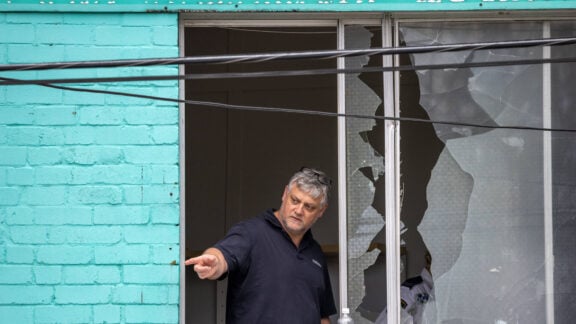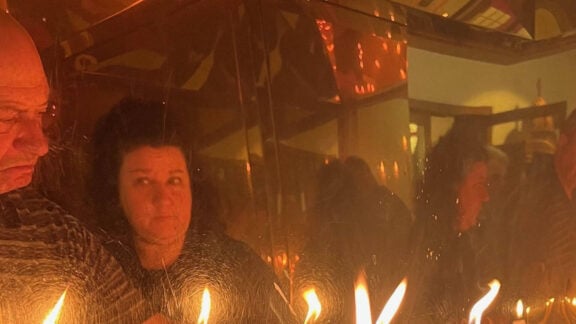As many Australians prepare to set sail for the northern summer aboard cruise ships, one luxury liner stands out: Celebrity Cruises, whose origins are intertwined with Australia’s history—from post-World War II mass migration to sheltering cyclone survivors in the Northern Territory.
Fifty-four years ago, on 18 March 1971, I arrived in Melbourne from Greece aboard the Patris with, technically speaking, only the preschool clothes on my back. As a four-year-old, I wasn’t entitled to carry a suitcase. My parents, along with my 10-year-old sister and eight-year-old brother, each had luggage rights and brought one suitcase apiece. I’m grateful they remembered to pack clothes for me.
Most post-1945 European migrants to Australia arrived under the Intergovernmental Committee for European Migration (ICEM), a program well documented by multicultural media like Neos Kosmos, including as recently as January.
Four Greek ships with Greek names brought the majority of Greek migrants—as well as others—to Australia. Owned by the Greek shipping company Chandris Lines, the Patris (“Homeland”), Ellinis (“Greek Lady”), Australis (“Australian Lady”) and Britanis (“British Lady”) were all marked by the bold “X” on their funnels—the first letter of Chandris’s Greek surname, Χανδρής (Chandris).
Like Chandris, my surname should begin with “Ch” in English, not “H”, as the Greek-to-Latin transliteration rules dictate. But things were lost in translation when my family settled here—resulting in the spelling “Houpis”, complete with the grammatically incorrect masculine “-s” ending for female members. And so, the surname “Houpis” was born.
Websites dedicated to classic ocean liners, such as lastoceanliners.com, detail how Chandris Lines entered the passenger ship trade in 1959, deploying a fleet that serviced migration routes from Europe to Australia via the Suez Canal, and often returned via the Panama Canal on global, transatlantic and port-to-port voyages.

Chandris’s first passenger vessel was the former Union-Castle liner Bloemfontein Castle, which was rebuilt to accommodate over 1,000 passengers—up from its original 700. It was renamed Patris and served to carry migrants like my family from Greece to Australia. The website notes the liner was “considered luxurious by the standards of the time”, featuring “a full-width main lounge, gallery, smoking room, two dining rooms, and a swimming pool with pool bar.”
My 92-year-old parents can vouch for these amenities. My mother even has a photo of herself in the dining room celebrating another passenger’s birthday—with drinks and party hats. One of the men in the photo eventually settled in Oakleigh, the same Greek-populated suburb of south-eastern Melbourne as my family, and my mother would often run into him at the shops.
But an SBS article from nearly a decade ago revealed even more fascinating history about the Patris. After Cyclone Tracy devastated Darwin on Christmas Day in 1974, the Patris was anchored in Darwin Harbour for nine months, providing emergency accommodation for thousands left homeless.
The Patris completed 91 voyages between 1959 and 1975 via Egypt’s Suez Canal, transporting thousands of Greek and other European migrants to Australia. According to the Greek Shipping Hall of Fame, Chandris Line ceased its migrant operations in 1978 due to rising costs, Australia’s termination of assisted passage schemes, and the advent of the jet age, which shifted passenger preferences toward air travel.
Still, hundreds of thousands of passengers remember Chandris Lines. Its famous “X” lives on today—now sailing not as a symbol of migration but of luxury. It adorns the ships of Celebrity Cruises, the company Chandris founded. These vessels now enter Sydney Harbour not to bring migrants in search of a better life, but to carry Australians seeking luxurious adventures abroad.








